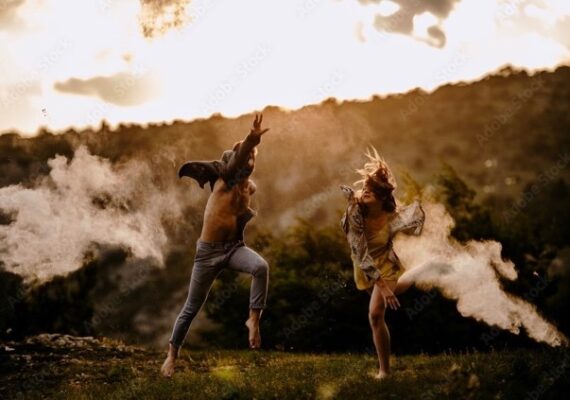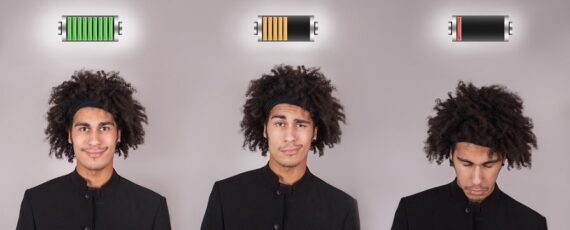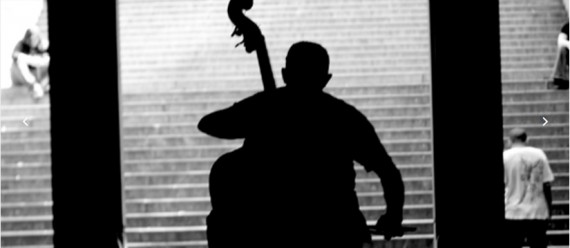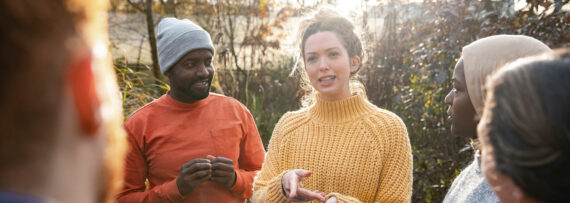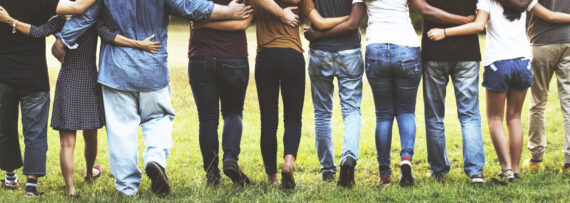A paper for people who have experience and/or work with Voice Dialogue
By: Oliver Scheider and Harriët Ordelman, June 2022
PREFACE
In the mountains of Crete, two Voice Dialogue students are kissed by the gods. One receives a gift from the goddess of the sky Athena and the other from the father of the gods Zeus. Because both students have experience in dance/drama, they have the idea of showing the gifts of the gods in dance. What will it be like if one person moves along with the other and, as a result of moving along, can recognize and feel what the gift is, without verbalizing it first? They dance on a wooden platform with a view of the mountains and it works wonderfully well. By moving along, you can dive into the world of experience of the other. During the “dance” words can be given to the experience of the other, which leads to an amplification (magnification) of the movement (so a kind of stretching ). There is recognition and acceptance of the sub personality and a sense of connection between the two. A rich experience!
From this experiment and the born enthusiasm for dance and drama, the idea arose for a paper to further investigate this way of working and to share it with other Voice Dialogue practitioners. Video fragments (in Dutch) of this experiment can be found via the QR code at the bottom of this paper.
We did several practice sessions, with each other and also one with fellow Voice Dialogue coaches. In these sessions we explored how dance can enhance the transformation process of Voice Dialogue. We have drawn on our experiences in the field of dance and drama and on literature that supports this. Two methods turned out to be very suitable: Authentic movement and Mirroring.
In this paper we talk about dance as a personal expression. The process of experiencing and expressing a certain sensation, feeling, image or energy in one’s own, authentic movement.
We will first briefly discuss the basics of Voice Dialogue, Authentic movement and Mirroring . Then we come to the subject of this paper: the integration of dance in a Voice Dialogue session. We will first describe these and then discuss what they can mean for Voice Dialogue sessions.
PSYCHOLOGY OF THE SELVES, THE CONSCIOUSNESS MODEL OF VOICE DIALOGUE
Hall and Sidra Stone developed Voice Dialogue. They have described their insights in a model of consciousness: the Psychology of the Selves. This model forms the basis for every VD session. Below we describe its essence. If you want to read more, we refer to ‘Coming home to yourself’ by Hal and Sidra Stone.
In our lives we develop patterns to feel less vulnerable in the world: our primary sub- personalities form a kind of screen around our vulnerability. They determine how we behave, think, and feel. Our disowned subpersonalities disappear into the unconscious. Voice Dialogue helps to be able to choose more freely in how we act, think, and feel. The Aware Ego develops, we can choose more consciously how we want to deal with our vulnerability.
The model describes the process of consciousness development on three levels. (Stamboliev, 2012) From: The Energetics of Voice Dialogue, by Robert Stamboliev)
- Tapping into different energy patterns/sub-persons within These are states we are in physically, emotionally, mentally, and spiritually. Each energy pattern consists of two polarities, one of which has often become more conscious (primary) and the other more unconscious (disowned) during life. The aim is to stretch primary sub-personalities, which are part of the conscious reality, and to learn their polarity from the unconscious.
- Conscious ego: by separating these polarities, a Conscious Ego is created in the middle, which can make conscious choices based on awareness and can take care of the vulnerability.
- Awareness : Perceiving life without judgment and without the need to influence The aim is to strengthen awareness .
AUTHENTIC MOVEMENT
Much of our dance/drama experience has roots in Authentic movement (Pallaro, 1999), a method in which sensory awareness plays a major role. We now describe the background and method of this form of movement and development.
Authentic movement is used for dance improvisation and dance therapy. It gives space to the direct expression of unconscious reality. Founding fathers include Mary Starks Whitehouse, Janet Adler and Joan Chodorow. Like Voice Dialogue, they base themselves on the psychology of Carl Jung.
Dancing from Authentic movement focuses attention on bodily sensations. Movement arises from an impulse from the dancer’s unconscious. The impulse becomes noticeable as a sensation, feeling, or image. The movement that arises from this, however subtle, gives sensory stimuli to the consciousness and takes shape in dance movement. The body experience thus bridges the gap between the unconscious and the conscious. Carl Jung called this process of transformation ‘ active imagination ‘.
Marie-Louise von Franz described active imagination in four steps:
- Opening the unconscious
- Let it take shape
- Response of the ego
- Integrating the new experience into life
Based on these steps, we will now sketch a picture of a dance session.
Opening the unconscious
The coach invites you to adopt a physical and mental attitude that makes it possible to listen to what presents itself in the body and emotional world. In the here and now. It asks to let go of unnecessary physical tension and to let go of judgment and self- censorship.
The preparation therefore consists of increasing this physical ‘presence’. Being present with attention to and from the body. Gravity can be used for this (releasing unnecessary tension in, for example, floor exercises or with shaking, falling or swinging movements), breathing or a body scan in simple movements. Hands-on exercises can also contribute to physical presence.
Let it take shape: the dance
From this listening position, the dancer follows the movement that arises from sensations, feelings, or images. It is dancing on the border of moving and being moved. Often people dance with their eyes closed. This makes it easier to keep focusing on your own body and perception.
Dance movement can range from a felt inner sensation to minimally visible movements, to larger movements in the outer space.
Dance from your own impulse or provide structure
If a client does not feel free to move or has less access to a specific movement quality or body part, the coach can initially provide structure in the form of focused assignments,
e.g. the exploration of polarities that play a role for the client. Examples of this are ‘the gravity that moves you down versus the lightness that moves you up’ (in depression), ‘expressive movement versus subdued movement’ or smooth circling movements in the pelvis.
Themes in dance
A client internalizes movements, feelings, and images from the unconscious by repeating them over and over in dance. This is how recurring themes arise. A theme can be
- Use of specific body parts
- A movement pattern (a recurring series of movements)
- A movement quality (e.g., strong, angular, or smooth)
When a polarity or energy from the unconscious integrates into the dance, the client can experience relaxation, amazement, clarity, peace, or self-love.
Anchoring in consciousness
The disadvantage of dance is that the experiences quickly escape consciousness. The witness (introduced below) therefore plays a major role in the Authentic movement process to anchor the experiences in consciousness.
Another form in which the experience can crystallize after dancing is through words, drawing, clay or other medium.
Response of the ego
In the Ego position, reflection follows with questions such as ‘how do I know this’, ‘what is my first memory of this’, ‘how is this new to me’ etc.
Integrating the new experience into life
The last step is to integrate into daily life what has come into consciousness. The advantage of working with dance is that the embodiment of the inner change takes place right from the start. New movement qualities and patterns are practiced immediately during exploration.
The witness
The witness role is essential in Authentic movement for developing confidence and awareness.
The witness resonates with the dance without interpreting or judging. During moments of reflection, they* show movement and energy that they observed during the session and uses words like ‘I saw’ or ‘I felt’ without interpretations, projections or judgements.
The effect is that the client feels seen in what they show in dance and feels emotionally safe. These reflections increase awareness.
Gradually the dancer develops their own inner witness. In the beginning, an inner critic often moves along, censoring movement and the inner world. Over time, it gives way more and more to the inner witness, the awareness, who observes the dance instead of judging it.
(*We use gender-inclusive language to avoid bias towards a particular sex or gender)
MIRRORING
Our second source of inspiration from our background in dance and drama is Mirroring. This is a method that was first developed and described by Marianne Chace and is used as one of the basic methods in dance therapy. (Mcgarry & Russo, 2011).
With Mirroring, you move along with the movement quality of the other person, the movement of the other person is mirrored. This can lead to connection and recognition, the other is seen, not only in the movement but also in the experience of it. Mirroring can be seen as:
The art to reflect deep emotional acceptance and communication through observing and mirroring non-verbal behavior (Levi as cited in Kil, 2010).
Mirroring has been studied many times within dance therapy. Research in neuroscience has shown that the mirror neurons in our brains ensure that empathy is increased through Mirroring.
In our words: through mirror neurons, the subtle movement and associated sensations and associated emotions of the client also take place in the body of the coach. And vice versa. On a non-verbal level, there is mutual connection and communication between coach and client.
It is important here that the role of the facilitator is not lost sight of, which means that they must not lose themselves physically, emotionally, or energetically in the movement.
Forms of mirroring
Mirroring the movement or energy does not always have to happen literally opposite each other as in a mirror. It can be more broadly understood as ‘giving back’ or ‘holding up a mirror’. It can take the following forms:
- invite (connect with….)
- mirror frontal
- shadowing
- strengthen
- movement dialogue
- observe empathetically
- show essence (core of the movement)
INTEGRATION OF DANCE IN A VOICE DIALOGUE SESSION
Both Voice Dialogue and Authentic movement aim at connecting the unconscious and conscious living world of the client and increasing awareness or inner witness.
When we integrate Authentic movement in a Voice Dialogue session, primary and disowned sub-persons take shape in dance. The coach takes the role of witness and looks from the consciousness of the psychology of the selves. Mirroring strengthens the empathy between coach and subpersonality. This ensures acceptance, resonance and stretching of this subpersonality in a non-verbal way.
During the session we could sometimes also talk to the sub-person about their way of moving, which form of Mirroring they preferred and ask other questions that you can also ask during a regular VD session.
Based on the three levels of consciousness development, we describe here how we integrate dance in a Voice Dialogue session.
Aware ego position
A Voice Dialogue session starts with an introductory conversation in which the client presents what they want to pay attention to, encounters or wants to develop. Listening to this, the facilitator hears which sub-persons or energies present themselves. Together with the client, it is decided which sub or energy will be explored first. This conversation takes place on the chair where the Ego position is anchored in space. The process of separating the sub-personalities from the Aware Ego takes place spatially related to this place.
When we use dance in a VD session, separating the sub-personalities from the Ego of course remains an essential part of the process.
During our sessions we noticed that the Ego position does not necessarily have to be in one fixed place. By constantly going back to the chair, the dance process can be disturbed. It is important that the client can emotionally separate the ‘Ego conversation’ from the energy of the sub-persons. For one it will be necessary to agree on a clear place in the room, while for the other one step aside ‘away from the energy of the sub- personality’ is clear enough.
Tap into, explore, and stretch sub-persons or energies
After an exploratory conversation, the client is given the space to follow the dance movement. Sometimes movement, body sensation or an image that provokes movement already presents itself during the conversation. Sometimes preparation is needed to increase physical presence.
All elements of Authentic movement that we described above we use within Voice Dialogue sessions.
Getting to know and stretching sub-persons requires the coach to resonate with the energy of the sub-person. This makes the subpersonality feel seen, accepted, and invited.
Mirroring is therefore a powerful tool for stretching, the acceptance of sub-persons and their energy. That is why it is worth discussing several concepts here.
Acceptance
Also, within a Voice Dialogue session it is about fully accepting the sub personalities, so that they dare to show themselves and can develop. Through Mirroring, this takes place on a deep emotional and energetic level. Mirroring provides the facilitator with non- verbal information that can be played back (verbally or in motion) and lead to further stretching and acceptance.
Inner and outer space
We already wrote that dance movement can vary from a felt inner sensation to minimal visible movement to larger movement in the outer space. Sometimes a subpersonality will mainly be felt internally, energetically, but not visible as movement in the outer space. As a coach we respect that and we mirror in the form of empathic observation, resonating with the energy as we do in a regular Voice Dialogue session. Because exuberant dancing is not a goal in itself.
Often, however, a sub who feels accepted will want to get out more. When the coach mirrors the subtle movement that arises, the next step is taken in the process of acceptance and communication with the outside world.
In our sessions we worked with the relationship between breath and movement. Breathing movement moves the body. Energy flows more freely.
We experience that disowned sub-persons are connected to parts of the body where energy does not flow freely.
By breathing more fully, those parts of the body also move more. The energy of these disowned sub-persons is tapped into and flows more freely.
The choice for one of the forms in which we enter a relationship with the client with Mirroring can be determined by
- degree of trust within the relationship (e.g. shadowing may feel safer to a client than frontally mirroring)
- the sub person’s preference (e.g. a warrior might want to be mirrored frontally)
We noticed that sometimes there was a moment when the movement became detached from the inner experience of the sub person. When we then shifted the attention from ‘doing’ to ‘feeling’, the inner experience of the subpersonality returned.
During our sessions, we also noticed that the vulnerable child require a specific form of mirroring. Naturally, we stopped doing the same movements as this part. We were going to offer the space in which, for example, an vulnerable child can experience the safety of being fully there. We did this by ‘empathic observation’. We also offered ourselves for movement dialogue to meet the needs of the vulnerable child (e.g. carrying the weight of the client on the back, standing in front of the client as security).
Awareness
A Voice Dialogue session is concluded with the part called ‘ awareness ‘. The coach tells what happened during the session and thereby strengthens the Awareness of the client. This is similar to the role of witness in Authentic movement.
In the Voice Dialogue sessions in which we worked with dance, we also did the ‘awareness’ in dance. In the role of witness, we gave back in motion, energetically and verbally what had happened in the session. In the role of client, we noticed that this anchored the experiences even more completely in our consciousness.
Integrate into everyday life
The intention of a transformation process is that you will make your new patterns your own. During Voice Dialogue you start to discover new patterns. The ultimate goal, of course, is that you will live them in everyday life, embody them, experience them in attitude and behavior and show them. That you will take care of your vulnerability from the Aware Ego and allow different sub-persons to be discussed more.
When dance is part of the sessions, embodying the inner change is an essential part of coaching. From the very beginning when an impulse takes shape in the body, we embody our energies and sub-persons. Through the coach as a witness we become familiar with this being seen by the outside world.
LAST BUT NOT LEAST
To conclude this paper, we would like to draw some conclusions and comment on our findings regarding the client and coach.
The value of dance in a Voice Dialogue session
Dance is of added value in various ways to achieving goals within a Voice Dialogue session.
It takes care off
- tapping into, inviting and accepting energy patterns in our subconscious
- stretching of energy / subpersonalities on a deep emotional and energetic level
- embodying new energy / sub-person and thus integrating it into daily life
- strengthening awareness in the form of an inner witness who allows movements ‘in the outside world’ and related experiences ‘in the inside world (such as sensations, feelings and images)’ without judgment.
The client
During the process we wondered which clients dance could be an inspiring and deepening addition to the Voice Dialogue process.
We think first of all about people who
- have a kinesthetically They have an affinity for perceiving body sensations.
- Become relaxed and happy by a playful approach
- have affinity or experience with dance/bodywork
In addition, it can be of added value for people whose development requires more attention to feeling, body awareness and/or a playful attitude to life. It will help this group to offer more structure and focused assignments.
The coach
To coach a Voice Dialogue session with dance naturally requires skills in the field of dance/drama and Voice Dialogue.
We would like to highlight a few skills that are important:
- Nuanced awareness of movement and inner world, in yourself and the person being coached.
- Inner permission to move along with the different energies / movement patterns of the person being coached.
- Be aware that the dance is
- Have a playful attitude towards the process
LITERATURE
McGarry, L. M., & Russo, F. A. (2011). ‘Mirroring in Dance/Movement Therapy: Potential mechanisms behind empathy enhancement’. The Arts in Psychotherapy, 38(3), 178-184
Pallaro , P (1999) ‘Authentic Movement, Essays by Mary Starks Whitehouse, Janet Adler and Joan Chodorow. Edited at Patricia Pallaro ‘, Jessica Kingsley Publishers
Stamboliev, R (2012) The Energetics of Voice Dialogue. Publisher De Zaak
This QR code takes you to a (Dutch spoken) video registration of experiments with dance and Voice Dialogue

Or via this link

